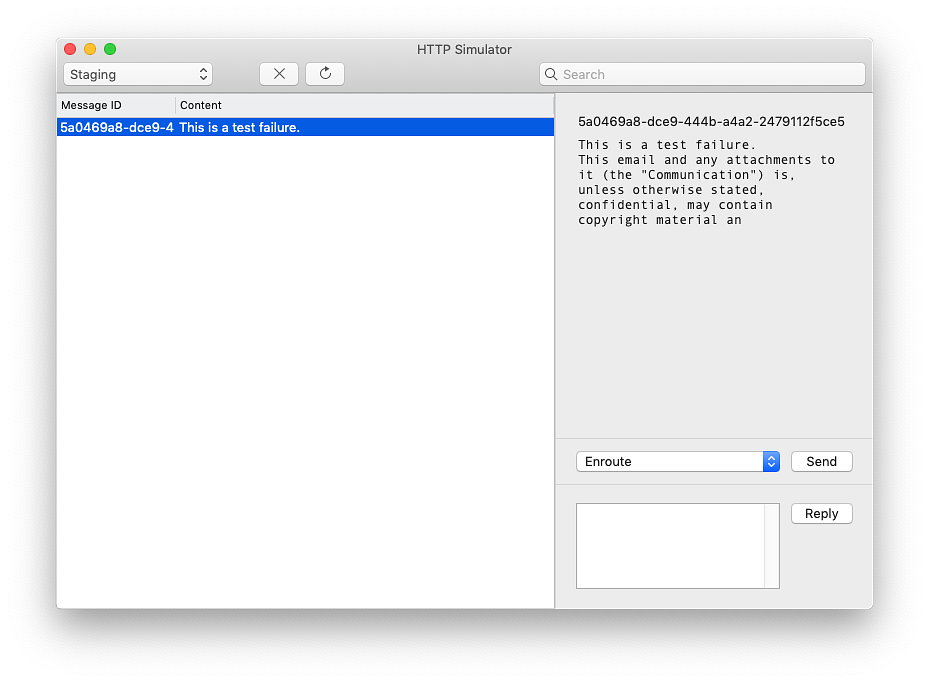Message Simulator Client
Years: 2017 — 2020
Status: Gone
I once worked at a company that was responsible for sending SMS messages via an API. Think one time passwords when you log into websites, before time-based OTP apps were a thing. And yeah, this did involve some "marketing" messages, although we were pretty strict about outright spam or phishing messages.
Anyway, since sending messages costed us money, we had a simulator setup in our non-prod environments which we used for testing. The features were pretty minimal: basically get the list of messages sent through the API, send a status message back, and simulating a reply from the receiver. The messages were kept in memory and there was no UI: everything was done via a web frontend generated from a Swagger spec.
Being somewhat bored one day, and getting frustrated with the clunky web frontend, I'd though I had a go at making a MacOS client for this thing. After finding my way around Xcode and AppKit, I managed to get something that was usable.

It was not a sophisticated app in the least. It only consisted of a toolbar, a client area, and a right sidebar.
The toolbar allowed switching the environment to connect to, such as Dev or Test. I believe the environments were hard-coded, and if I wanted to add a new one, I'd had to change the Swift code. There was a button to clear the messages from the simulator, and one to refresh the list of messages. There was also a very simple search, which simply did an in-memory substring match, but was good enough for finding unique IDs.
The client area consisted of the message ID and message body, and that's it. Not included were source and target numbers, plus a few other things. These were occasionally useful to me, but not enough to justify the effort it would take to add them to the UI (I was more likely to use the message body anyway).
The right sidebar consisted of the message "details", which was just the message ID and message content. There were also sections for sending a particular status message, or sending a reply to the selected message.
I always had grand plans for more features, but I couldn't justify the time. And eventually I decided to leave, and the project was wiped once I returned my laptop.
Despite how bare-bones it was, it was still useful, and something I used most days if I had to work with the simulator. And given that it was my first attempt at a native Mac app, I was reasonably proud of it. So I think it deserves a place in the archives.